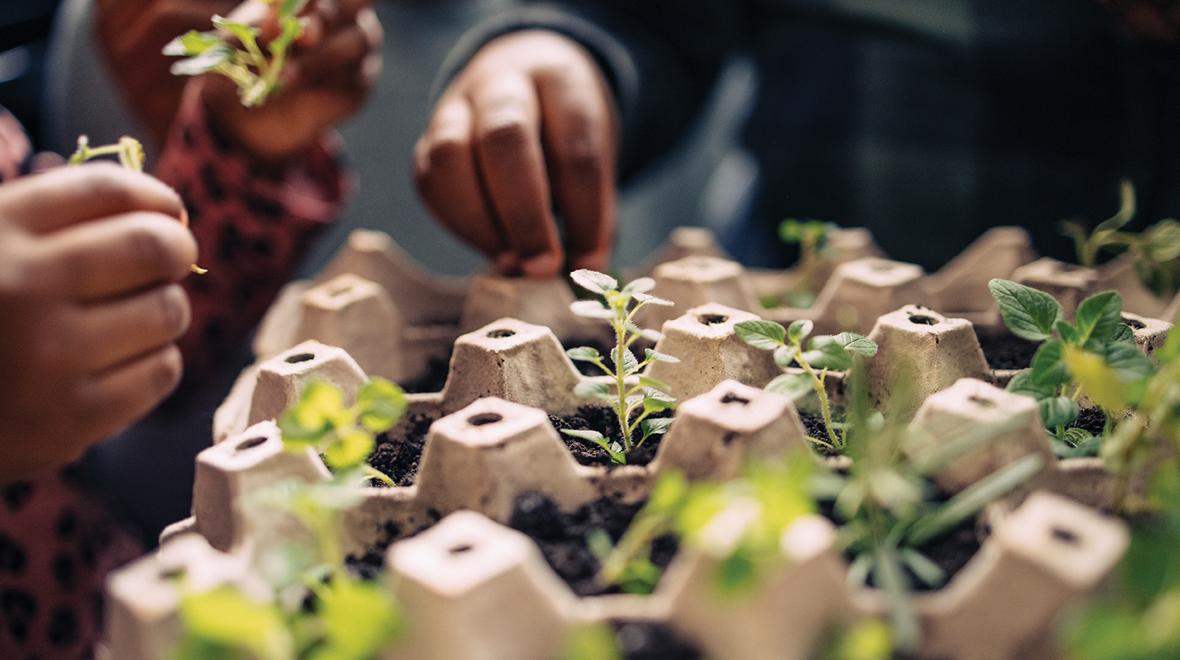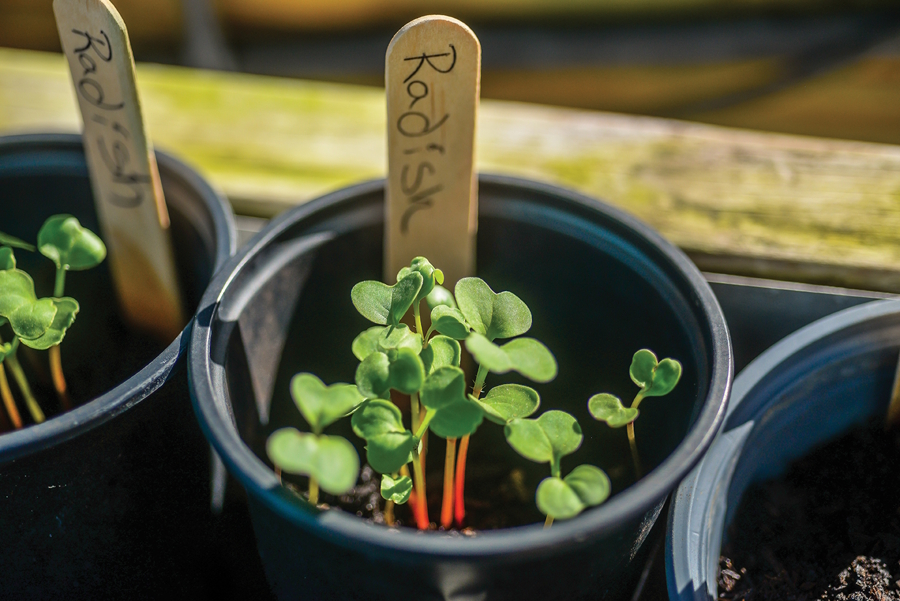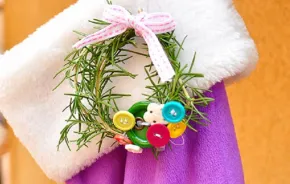
Photo:
iStock
During this time of year, playing outside is not particularly appealing on most days. But kids can still connect with nature and get excited for the warmer days of spring by starting seeds indoors. Planting seeds is a fun way for kids to learn about biology, become invested in the natural world, develop patience, and even become more adventurous eaters. (Studies confirm that kids are more likely to eat food they helped grow.)
To everything a season
Many popular vegetables need soil temperatures of 60 F or higher to germinate. In our area, that usually occurs in late May, which may not leave enough time to grow and produce fruit before the weather turns cold again in fall. So, we give seeds a head start indoors and plant the seedlings outside once it’s warm enough.
The best time to start your seeds depends on your planting zone and on the amount of time it takes for that type of plant to reach maturity. You can find your USDA Plant Hardiness Zone online and use that to determine planting dates based on the instructions on each seed packet. This could be a good job for your older kids, but if you want to keep things simple, the “Maritime Northwest Garden Guide” from Tilth Alliance is the classic gardening calendar for local green thumbs. You can also enter your ZIP code online at Almanac to find localized planting dates for many vegetables, fruits and herbs.

Getting started
Creating a seed-starting setup can easily run into hundreds of dollars if you’re not careful. But unless you’re trying to become self-sufficient, you don’t really need most of the fancy gear you’ll find marketed as necessities. Special seed trays or biodegradable pots are nice, but old milk cartons are equally effective. A few wood craft sticks are handy to label your seeds, but it can be fun to be surprised and practice plant identification, too.
All you really need are seeds, soil and sunlight — all of which can be manipulated to improve your chances of success.
Seeds
Poring over seed catalogs on a rainy Saturday is surprisingly entertaining, and it’s the best way to source interesting plants (an all-purple vegetable garden, maybe?) that are appropriate for the local climate. But if you want to get started right away, browsing seed racks at your local nursery is fun, too. Big hardware stores might be cheaper, but they tend to have fewer varieties as well as stock selections that are not tailored to our region. It’s better to pay a little more for seeds that you can count on.
You want your kids to have fun, so it’s best to choose sturdy plants that germinate quickly. Alfalfa sprouts, radishes and lettuce are more likely to be successful than finicky plants like cauliflower, artichokes or onions. Similarly, flowers like sweet pea, cosmos or love-in-a-mist are better choices than lavender, which can take months to germinate. But beware of invasives. Your kids might enjoy easy success from starting mint, lemon balm or purple loosestrife, but if you plant these things outside, they will take over your garden and may even invade natural areas.
Soil
It’s tempting and — despite internet warnings to the contrary — possible to use dirt from the backyard, but you’ll have better success with a commercial seed-starting mix or even regular potting soil. These products are lighter in texture and better than natural garden soil at holding water without becoming waterlogged, making it easier for delicate seedlings to survive.
Sunlight
The Puget Sound region’s short, cloudy winter days may not be bright enough for many seedlings to thrive, even in a “sunny” window. That doesn’t mean you have to build a grow closet to start seeds (unless you want to; that could be another fun project). But purchasing a couple of inexpensive grow lights to place over your plants will be helpful. Since seedlings need warm soil to grow and windowsills tend to be colder than the interior of the room, a heating mat will improve germination and growth. But placing seedlings near a heat vent or even moving them away from the window at night can make a difference, too.

The hardest part
Even the fastest germination rates can seem like a long time to excited kids, and waiting without action can be frustrating. Encourage kids to develop a schedule for seedling maintenance tasks, and keep them engaged with watering, misting and turning grow lights and heating mats on and off every day. Kids of all ages can design the garden where they will eventually plant their seedlings outdoors. The youngest can draw pictures, while older kids can practice measuring outdoor spaces and using graph paper to make planting plans based on plants’ eventual sizes. If your kids are really enthusiastic, they can start learning how to collect new seeds from your plants once those are mature or try new recipes that use the plants you are growing.
Indoor gardener
If you don’t have a yard in which to transplant your seedlings, don’t despair. Many flowers and vegetables can grow successfully in a window box, in pots on a balcony or porch, or even indoors. The picture book “Linnea’s Windowsill Garden” is full of fun indoor gardening projects, such as starting plants from the seeds in grocery store oranges, melons, tomatoes, grapes and avocados. You can grow green onions from the root ends and grow garlic greens from old garlic cloves, or try an indoor herb garden.
Many houseplants can also be grown from cuttings. Succulents, like jade plants or hens and chicks, are the easiest to root, but beware of enthusiastic overwatering. Cuttings from philodendrons, begonias, coleus and polka dot plants are good candidates for rooting in a glass of water.
Whatever your housing situation, there is some kind of plant that you and your kids can enjoy propagating while you wait for the warmer, drier days of summer.
More gardening fun for kids and families: |











